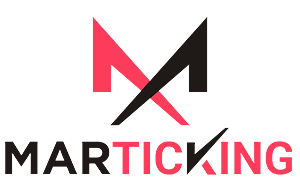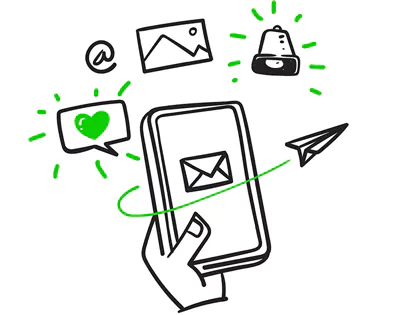In the dynamic landscape of social media, Twitter stands as a powerful platform where concise messages can have a resounding impact. Unlocking the secrets to Twitter engagement is not just about crafting tweets; it’s about building a brand presence that resonates with your audience. From individuals to businesses, the art of engagement on Twitter involves a strategic blend of compelling content, community interaction, and brand authenticity.
Building a personal profile
Building a strong and engaging personal profile on Twitter involves several key elements. Here’s a step-by-step guide to help you create a compelling presence on the platform:
1. Profile Picture:
Choose a clear and professional profile picture. It could be your headshot or a logo, depending on whether you’re representing yourself or a brand.
2. Twitter Handle (Username):
Select a Twitter handle that is easy to remember and reflects your name or brand. Keep it concise and avoid unnecessary characters.
3. Bio:
Craft a concise and engaging bio that provides a snapshot of who you are or what your brand represents. Include relevant keywords to improve discoverability.
4. Location and Website:
Add your location to give your profile a personal touch. Include a link to your website or a relevant landing page, whether it’s a personal blog, portfolio, or business site.
5. Header Image:
Choose a visually appealing header image that complements your personal or brand identity. This could be a high-quality photo, a branded image, or an illustration.
6. Pinned Tweet:
Pin a tweet to your profile that represents you or your brand effectively. It could be a popular tweet, an important announcement, or a link to something significant.
7. Tweets and Content:
Start tweeting regularly. Share a mix of personal insights, professional achievements, and relevant content from others in your industry. Utilize a combination of text, images, GIFs, and videos to keep your content diverse and engaging.
8. Engage with Others:
Respond to tweets, participate in conversations, and engage with your followers and those in your industry. Retweet and like content from others to build a supportive community.
9. Use Hashtags:
Incorporate relevant hashtags in your tweets to increase discoverability. Create a personalized hashtag for your brand or personal campaigns.
10. Follow Relevant Accounts:
Follow accounts that align with your interests, industry, or personal brand. Engage with influencers and thought leaders in your field.
11. Optimize Privacy Settings:
Adjust your privacy settings based on your comfort level. However, keep in mind that a public profile often leads to more engagement.
12. Consistent Branding:
Maintain a consistent brand image across all elements of your profile, including visuals, tone, and messaging.
How to you brand yourself on twitter:
Branding yourself on Twitter involves optimizing your profile, crafting engaging content, and actively participating in relevant conversations. Here’s a step-by-step guide on how to brand yourself effectively on Twitter:
Profile Optimization:
Use a professional and recognizable profile picture. Choose a handle that reflects your name or brand and is easy to remember. Craft a concise and compelling bio that highlights your expertise, interests, and personality. Use a visually appealing header image that aligns with your personal brand.
Tweet Regularly:
Share a mix of personal insights, professional achievements, and industry-related content.
Consistency is key; tweet regularly to stay visible in your followers’ feeds.
Engage with Your Audience:
Respond to mentions and messages promptly. Engage with your followers’ content by liking, retweeting, and commenting.
Use Hashtags:
Incorporate relevant hashtags in your tweets to increase discoverability. Create a branded hashtag for your personal brand or campaigns.
Share Multimedia Content:
Include images, GIFs, and videos in your tweets to make them more engaging. Share behind-the-scenes looks, snapshots of your work, or visuals that resonate with your brand.
Curate and Create Content:
Curate and share content from others that align with your personal brand. Create original content that showcases your expertise and personality.
Network and Participate:
Follow and engage with influencers and thought leaders in your industry. Participate in relevant Twitter chats and conversations to expand your network.
Promote Your Twitter:
Share your Twitter handle on other social media platforms and in your email signature. Encourage others to follow and engage with you on Twitter.
Monitor and Adjust:
Regularly review your Twitter analytics to understand what works best. Adjust your strategy based on engagement metrics and audience feedback.
Personal logo type
- Design a simple and recognizable logo that represents you or your brand. Ensure it is square-shaped for compatibility with Twitter’s profile picture dimensions.
- Avoid intricate details to ensure visibility at smaller sizes.
- Choose a color scheme that complements your overall branding.
- Make it scalable, ensuring clarity when displayed in various sizes.
- Crop or resize your logo to meet Twitter’s profile picture specifications.
- Twitter recommends a minimum size of 400×400 pixels, and the maximum file size is 2 MB.
- Log in to your Twitter account.
- Navigate to your profile by clicking on your profile picture in the top left corner.
- Click on “Edit profile.”
- Hover over your current profile picture and click on “Change.”
- Upload your personal logo.
- Twitter will allow you to adjust and crop the image as needed.
- Preview how your logo will appear in both large and small sizes.
- Once satisfied, click “Apply” or “Save changes” to update your profile picture.
- Visit your Twitter profile to ensure your personal logo appears as intended.
- Verify that it is clear and recognizable, even in the smaller thumbnail view.
- Ensure that your personal logo aligns with the overall branding on your Twitter profile.
- Maintain consistency in colors and visual elements to strengthen your brand identity.
- Regularly review your Twitter profile, updating your personal logo if necessary.
- Adapt your logo to any changes in your branding or personal identity.
Tweets strategy
Developing a successful tweets strategy on Twitter involves thoughtful planning, content creation, and engagement. Here’s a comprehensive guide to help you formulate an effective strategy:
1. Understand Your Audience:
Identify your target audience and understand their interests, preferences, and behaviors on Twitter. Tailor your content to resonate with your specific audience.
2. Define Your Brand Voice:
Establish a consistent and authentic brand voice. Consider the tone, language, and style that align with your brand personality.
3. Content Mix:
- Diversify your content mix to include a variety of tweet types:
- Share insights and tips related to your industry.
- Infuse humor, memes, or fun facts.
- Highlight products, services, or achievements.
- Ask questions or run polls to encourage interaction.
4. Use Visuals:
Incorporate images, GIFs, and videos in your tweets to increase engagement. Visual content tends to grab more attention in the Twitter feed.
5. Hashtags:
Use relevant hashtags to increase the discoverability of your tweets. Create a branded hashtag for campaigns or consistent messaging.
6. Consistency:
Tweet regularly to maintain a consistent presence in your followers’ feeds. Use scheduling tools to plan tweets at optimal times.
7. Engage with Others:
Respond to comments, mentions, and direct messages promptly. Participate in conversations within your industry or community.
8. Retweet and Quote Tweet:
Share valuable content from others in your industry by retweeting or quoting tweets. Add your insights when you quote tweet to contribute to the conversation.
9. Twitter Chats:
Participate in relevant Twitter chats to connect with others in your industry. Use the chat hashtag and engage in discussions.
10. Polls and Surveys:
Run polls to gather opinions or insights from your audience. Use survey tools to conduct more in-depth research.
11. Promotions and Contests:
Run promotions or contests to boost engagement and attract new followers. Clearly communicate rules and deadlines.
12. Analytics and Optimization:
Regularly analyze Twitter analytics to understand the performance of your tweets. Optimize your strategy based on what works best for your audience.
13. Twitter Moments:
Create Twitter Moments to curate and showcase a collection of related tweets. Use Moments for highlights, events, or campaigns.
14. Monitor Trends:
Stay aware of trending topics and hashtags. If relevant, join conversations around trending topics to increase visibility.
15. Quality Over Quantity:
Prioritize the quality of your tweets rather than the quantity. Craft compelling and shareable content.
16. Promoted Tweets:
Consider using promoted tweets for targeted advertising. Set specific goals and demographics for your promoted content.
17. Feedback and Iteration:
Pay attention to feedback from your audience. Iterate and refine your strategy based on what resonates with your followers.
18. Accessibility:
Ensure your tweets are accessible by adding alt text to images. Use clear and concise language for better comprehension.
Conclusion:
In conclusion, a successful Twitter strategy is built on understanding your audience, maintaining a consistent brand voice, and crafting a diverse mix of engaging content. From educational tweets to entertaining posts and promotional content, each tweet should contribute to your overall brand identity and resonate with your followers.
The use of visuals, hashtags, and consistent engagement with your audience adds depth to your Twitter presence. Regularly analyzing analytics helps refine your strategy, ensuring you adapt to what works best for your audience.


